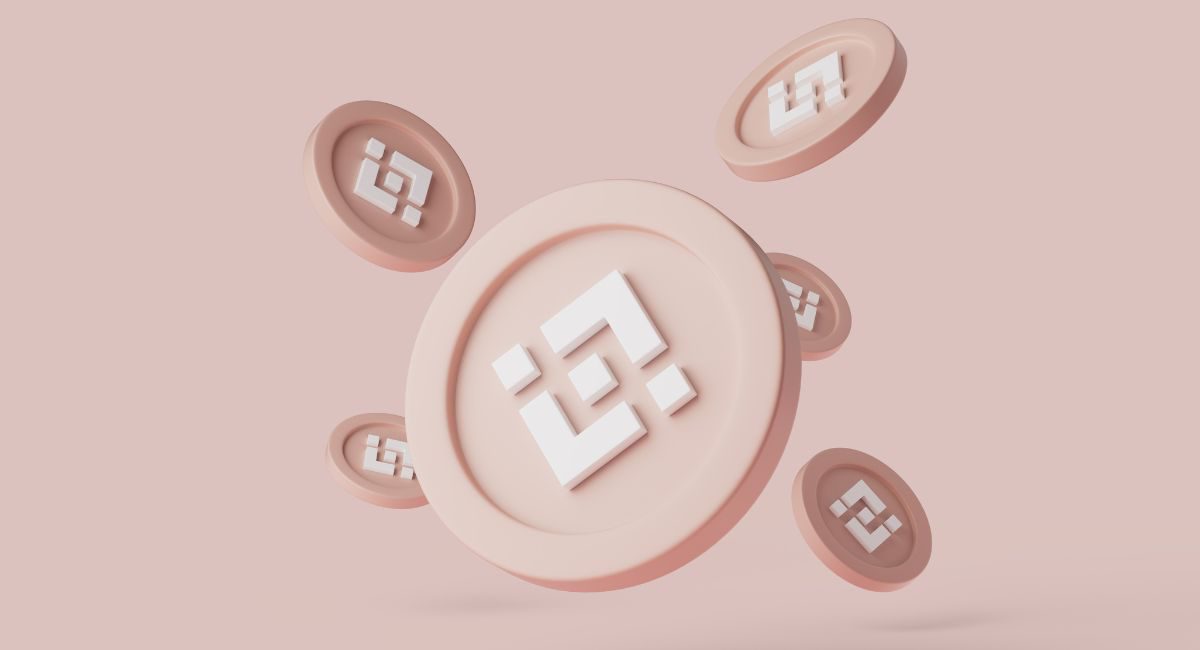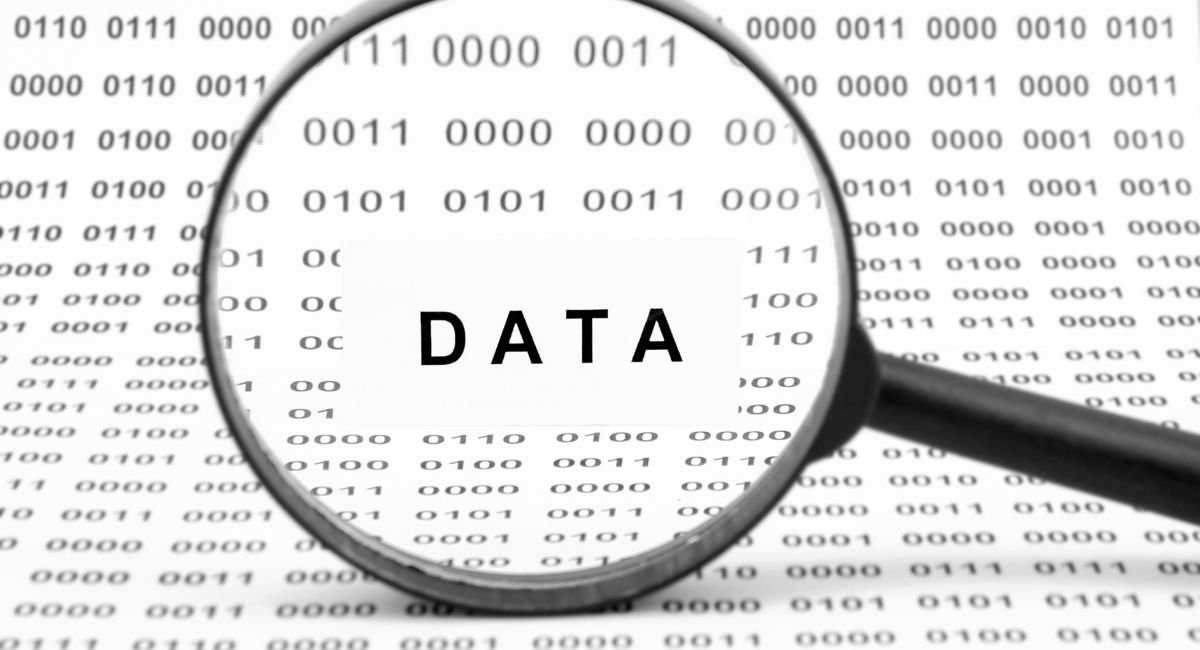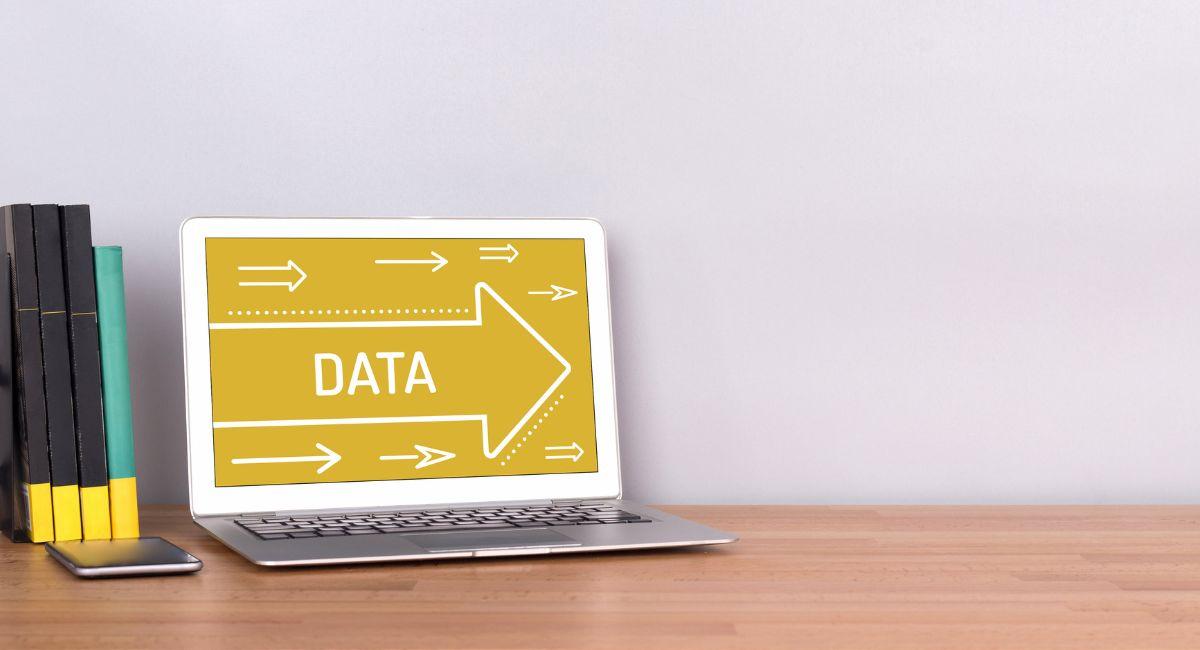Your Ultimate Guide To Blockchain Powered Data Exchange And Its Top 5 Benefits

In an era characterized by the rapid digitization of information, the concept of data exchange has gained paramount importance across industries. Data, once a mere byproduct of transactions, has evolved into a valuable resource that fuels innovation, insights, and strategic decision-making. The emergence of blockchain technology has introduced a revolutionary framework for redefining how data is exchanged, shared, and managed. In this comprehensive exploration, we will delve into the foundational aspects of blockchain powered data exchange, unraveling its significance, mechanisms, and potential impact on various sectors.
Introduction to Blockchain Technology:
At its core, a blockchain is a decentralized and distributed digital ledger that records transactions in a secure, transparent, and immutable manner. Each transaction, or “block,” is cryptographically linked to the preceding one, forming a chronological chain. This design ensures that the information stored within the blockchain is tamper-proof and resistant to unauthorized modifications.
Blockchain’s decentralized nature eliminates the need for intermediaries by enabling participants to engage in peer-to-peer transactions and interactions. Its security features make it particularly suitable for managing sensitive data while maintaining data integrity and authenticity.
China launches blockchain-powered data exchange
The platform will facilitate the buying and selling of Web3 data among enterprises, with Alibaba Cloud and Huawei among the companies to participate.
#加密货币 #加密货币交易 #cryptotrading #cryptotrade— 🇨🇳 Chinese Blockchain (@ChineseSignal) August 24, 2023
Data Exchange in the Digital Era:
Data exchange is the process of sharing information between different entities, whether they are individuals, organizations, or devices. In our increasingly interconnected world, data exchange takes many forms, ranging from financial transactions and personal communications to supply chain updates and healthcare records. Traditional data exchange methods often rely on centralized intermediaries or platforms to facilitate transactions and validate the integrity of data.
However, this centralized approach can pose challenges such as single points of failure, data breaches, and the need for trust in intermediaries. Additionally, data silos can hinder the seamless flow of information between parties, limiting the potential for innovation and collaboration.
Also, read – What Is The Importance Of Smart Contracts In Blockchain Data Distribution?
Role of Blockchain in Data Exchange:
Blockchain technology introduces a paradigm shift in the landscape of data exchange by addressing many of the limitations of centralized systems. Here’s how blockchain plays a pivotal role:
- Security and Immutability: Data stored on a blockchain is cryptographically secured, making it highly resistant to tampering, unauthorized access, or manipulation. Once data is recorded on the blockchain, it becomes virtually immutable, ensuring the integrity of the information exchanged.
- Transparency and Accountability: The distributed nature of blockchain ensures that all participants in the network have access to the same version of the data. This transparency fosters trust and accountability, as any discrepancies or inconsistencies can be easily identified and resolved.
- Decentralization and Trustlessness: Blockchain’s decentralized architecture eliminates the need for intermediaries to facilitate transactions. Transactions occur directly between participants, reducing the dependency on trusted third parties and mitigating the risks associated with centralized control.
- Efficiency and Automation: Smart contracts, self-executing code stored on the blockchain, automate and enforce the terms of agreements. This streamlines data exchange processes, reducing administrative overhead and minimizing the potential for errors.
- Global Accessibility: Blockchain-powered data exchange is not bound by geographical boundaries. Participants from different parts of the world can engage in secure and transparent data sharing without intermediaries.
Blockchain powered data exchange represents a transformative leap forward in how data is shared, managed, and valued. By leveraging the strengths of blockchain technology, individuals and organizations can unlock new possibilities for secure, efficient, and trustless data exchange across various domains. As this technology continues to evolve, its impact on industries ranging from supply chain management to healthcare and beyond is poised to reshape business processes and redefine the boundaries of collaboration.
Benefits of Blockchain Powered Data Exchange

Blockchain technology’s integration into data exchange brings about a multitude of advantages that address some of the most pressing challenges in the digital age. From enhancing security and privacy to fostering transparency and enabling cost savings, the benefits of blockchain-powered data exchange are both transformative and far-reaching.
1. Enhanced Security and Privacy:
Security breaches and data leaks have become common concerns in the digital landscape. Blockchain offers robust solutions to these challenges:
- Cryptographic Security: Data stored on a blockchain is encrypted using advanced cryptographic techniques. This ensures that only authorized parties can access and decipher the data.
- Immutable Records: Once data is recorded on a blockchain, it becomes nearly impossible to alter or delete. This guarantees the integrity of exchanged data and prevents unauthorized tampering.
- Data Ownership Control: Blockchain enables individuals to have greater control over their data by allowing them to grant permission for specific parties to access their information.
2. Transparency and Immutable Records:
Transparency is a cornerstone of blockchain technology, and it has profound implications for data exchange:
- Immutable Audit Trail: Every transaction recorded on the blockchain leaves a permanent and transparent trace. This audit trail fosters accountability as any changes or updates can be traced back to their origin.
- Consensus Mechanisms: Transactions on the blockchain are verified through consensus mechanisms, requiring agreement from multiple participants. This ensures the accuracy and validity of the data being exchanged.
- Public vs. Private Blockchains: Public blockchains provide complete transparency as anyone can access the ledger, while private blockchains limit access to authorized participants, maintaining confidentiality while benefiting from blockchain’s features.
3. Decentralization and Trust:
The decentralized nature of blockchain reshapes the dynamics of trust and control in data exchange:
- Elimination of Intermediaries: Blockchain removes the need for intermediaries, reducing the reliance on centralized authorities and minimizing the risks associated with single points of failure.
- Trustless Transactions: Participants can engage in transactions without inherently trusting each other. The blockchain’s transparent and auditable nature ensures trust is established through verification rather than blind faith.
4. Efficiency and Cost Savings:
Blockchain streamlines data exchange processes, leading to increased efficiency and reduced costs:
- Smart Contracts: These self-executing contracts automatically trigger actions when predefined conditions are met. They eliminate the need for manual intervention and intermediaries, saving time and reducing errors.
- Automation of Workflows: Blockchain can automate complex data exchange workflows, enabling seamless and accurate execution of agreements.
- Removal of Intermediary Fees: By bypassing intermediaries like banks or payment processors, blockchain-powered transactions can significantly lower transaction fees.
5. Data Monetization and Ownership Control:
Blockchain also empowers individuals and organizations to have more control over their data and how it’s used:
- Monetization Opportunities: Participants can share their data on their terms, allowing them to receive compensation or incentives for sharing valuable information.
- Selective Data Sharing: Blockchain enables granular control over data sharing. Users can specify who has access to their data and for what purposes, enhancing data privacy.
The benefits of blockchain powered data exchange extend beyond conventional data sharing methods. Enhanced security, transparency, decentralization, efficiency, and ownership control collectively revolutionize how data is exchanged and managed. These benefits not only address existing challenges but also open up new avenues for innovation and collaboration across industries. As blockchain technology continues to evolve, its impact on data exchange is poised to reshape the digital landscape and redefine the boundaries of trust and transparency.
Challenges and Considerations in Blockchain-Powered Data Exchange

While the potential benefits of blockchain powered data exchange are substantial, it’s essential to recognize and address the challenges that accompany this transformative technology. From scalability concerns to regulatory complexities, these challenges must be navigated to fully harness the advantages of blockchain in data exchange.
1. Scalability and Performance:
One of the most pressing challenges in blockchain technology is scalability. As the number of participants and transactions on a blockchain network grows, the network’s performance can degrade. This is particularly true for public blockchains that use consensus mechanisms like Proof of Work (PoW). The process of verifying transactions can become time-consuming and resource-intensive, leading to slower transaction speeds and higher fees.
2. Interoperability and Standards:
The blockchain landscape is diverse, with numerous platforms and protocols available. Different blockchains may have varying structures, consensus mechanisms, and smart contract languages. Achieving seamless interoperability between these diverse systems can be challenging. Without standardized protocols and mechanisms, data exchange between different blockchains or systems can be cumbersome and may require additional development efforts.
3. Regulatory and Legal Complexities:
Data exchange often involves the sharing of sensitive information, and regulatory and legal considerations play a significant role in shaping how data can be exchanged securely and compliantly:
- Data Privacy Regulations: Different regions and countries have varying data privacy regulations (e.g., GDPR in Europe). These regulations can impact how personal and sensitive data is stored, shared, and managed on a blockchain.
- Cross-Border Transactions: Blockchain’s decentralized nature can create complexities when data is shared across borders, as legal frameworks differ internationally.
- Identity Verification: Ensuring compliance with Know Your Customer (KYC) and Anti-Money Laundering (AML) regulations is critical in industries like finance and healthcare.
4. Data Ownership and Consent:
Defining ownership and obtaining consent for data exchange are intricate considerations in blockchain-powered systems:
- Data Sovereignty: Blockchain’s transparency can create challenges regarding who owns the data and how it is used. Clarifying data ownership rights becomes crucial to avoid disputes.
- Smart Contracts and Automation: While smart contracts automate data exchange, ensuring that they accurately represent the terms agreed upon and have the flexibility to handle changing conditions is vital.
- Consent Mechanisms: Mechanisms to obtain explicit consent for data sharing and processing must be implemented. Participants need to have control over how their data is used.
5. Environmental Impact:
Certain blockchain networks, especially those that use the Proof of Work consensus mechanism, consume significant amounts of energy. This has raised concerns about the environmental impact of blockchain technology, particularly in the context of data-intensive applications.
While blockchain-powered data exchange offers a revolutionary approach to managing and sharing data, it is not without its challenges. Addressing scalability concerns, ensuring interoperability, navigating regulatory complexities, clarifying data ownership, and minimizing the environmental impact are all critical considerations. As the technology matures, collaborative efforts from the industry, regulatory bodies, and innovators will play a pivotal role in overcoming these challenges and establishing a robust framework for secure and efficient blockchain powered data exchange.
Key Components of a Blockchain Data Exchange Ecosystem

A well-designed blockchain data exchange ecosystem comprises various components that collectively ensure the security, efficiency, and reliability of data exchange processes. These components work in synergy to create a seamless and trusted environment for participants. Let’s explore the key components in detail:
1. Nodes and Consensus Mechanisms:
Nodes are the fundamental building blocks of a blockchain network. They are individual computers that validate and store transactions on the blockchain. Nodes play a crucial role in maintaining the network’s security, consensus, and integrity. Two primary consensus mechanisms are commonly used:
- Proof of Work (PoW): This mechanism requires nodes, also known as miners, to solve complex mathematical puzzles to validate transactions. It is resource-intensive and ensures security through computational power. However, it can lead to scalability and energy consumption challenges.
- Proof of Stake (PoS): In PoS, validators (nodes) are chosen to create new blocks based on the number of tokens they hold and are willing to “stake” as collateral. PoS is energy-efficient compared to PoW and encourages network participants to act in the best interest of the blockchain.
2. Smart Contracts for Data Exchange:
Smart contracts are self-executing programs that automatically execute predefined actions when specific conditions are met. They play a pivotal role in automating and facilitating data exchange processes on the blockchain. In the context of data exchange, smart contracts can be programmed to trigger actions such as transferring ownership of digital assets, validating data integrity, or executing payments.
Smart contracts enable:
- Automated Transactions: Once the conditions encoded in a smart contract are met, transactions are executed automatically, eliminating the need for intermediaries.
- Trust and Transparency: Participants can trust that the agreed-upon terms will be executed as programmed, as smart contracts are tamper-proof and transparent.
- Efficiency: By removing intermediaries, smart contracts streamline processes, reduce costs, and minimize the potential for errors.
3. Identity Management and Authentication:
Robust identity management solutions are essential to ensure the legitimacy of participants in a blockchain data exchange ecosystem. Identity management components include:
- Digital Identity: Participants’ digital identities are cryptographic representations that link their real-world identity to their blockchain presence. Digital identity solutions provide a secure and privacy-preserving way to verify participants.
- Authentication: Multi-factor authentication and cryptographic keys ensure that only authorized participants can access and interact with the blockchain network.
- Consent Mechanisms: Smart contracts can incorporate mechanisms to obtain explicit consent from participants before data is shared. This enhances data privacy and ensures compliance with regulations.
Identity management and authentication components contribute to the overall security and integrity of data exchange, preventing unauthorized access and maintaining participants’ control over their data.
The key components of a blockchain data exchange ecosystem work in harmony to create a secure, automated, and efficient environment for sharing and managing data. Nodes and consensus mechanisms validate transactions, smart contracts automate processes, and identity management solutions ensure the authenticity of participants. These components collectively form the foundation for a decentralized and trust-based data exchange framework that can revolutionize various industries.
Real-World Applications of Blockchain Powered Data Exchange

The transformative potential of blockchain powered data exchange extends across various industries, reshaping traditional processes and unlocking new opportunities for secure and efficient data sharing. Let’s delve into some real-world applications that showcase the power of blockchain in enhancing transparency, security, and collaboration:
1. Supply Chain Management:
Supply chain management is a complex network involving multiple parties, transactions, and processes. Blockchain offers a revolutionary approach to improving traceability, transparency, and accountability in supply chains:
- End-to-End Traceability: Every step of a product’s journey, from raw materials to the end consumer, can be recorded on a blockchain. This ensures authenticity and prevents counterfeiting.
- Reduced Fraud and Disputes: Transparent supply chain data reduces the risk of fraudulent activities and disputes, as participants have access to an immutable record of transactions.
2. Healthcare Data Sharing:
Blockchain has the potential to revolutionize healthcare by enabling secure and controlled data sharing among various stakeholders, including patients, healthcare providers, and researchers:
- Patient-Controlled Data: Patients can grant permission to specific healthcare providers or researchers to access their medical records securely and with granular control.
- Interoperability: Blockchain fosters interoperability between different healthcare systems, allowing seamless and secure exchange of patient data while maintaining data privacy.
3. IoT Data Marketplace:
The Internet of Things (IoT) generates vast amounts of data from interconnected devices. Blockchain facilitates secure and efficient data exchange within the IoT ecosystem:
- Data Monetization: Device owners can securely share data with authorized parties while retaining control over how their data is used. This opens new revenue streams in the form of data marketplaces.
- Data Integrity: IoT-generated data can be verified and secured using blockchain’s immutability, ensuring the accuracy and authenticity of data.
4. Financial Data Sharing:
Financial institutions handle sensitive customer data and are subject to strict regulatory requirements. Blockchain can streamline data sharing while ensuring compliance and data privacy:
- Secure Compliance: Financial institutions can securely share customer data for regulatory compliance purposes, such as anti-money laundering (AML) and Know Your Customer (KYC) requirements.
- Data Privacy: Blockchain’s encrypted and permissioned nature ensures that only authorized parties have access to sensitive financial data.
5. Intellectual Property Protection:
Blockchain offers innovative solutions for safeguarding intellectual property rights and ensuring fair compensation for creators:
- Digital Rights Management (DRM): Creators can use blockchain to establish ownership of digital content and manage licensing agreements automatically through smart contracts.
- Microtransactions: Blockchain enables seamless microtransactions, allowing creators to be compensated directly for the use of their content in real-time.
These real-world applications underscore the versatility of blockchain powered data exchange in enhancing transparency, security, and efficiency across diverse industries. As organizations recognize the potential of this technology, they are increasingly leveraging blockchain to reimagine traditional processes, drive innovation, and create new value propositions for their stakeholders.




























































